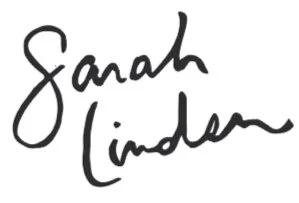What to Avoid When Photographing A Space
Investing in interior photography is just that—an investment! Not only have you given blood, sweat, and tears (often literally) to a project, you’re now committing additional resources to get your work in the public’s eye, which can only happen through photography. Don’t let these four things negate the investment you’re making.
1. Overhead Light
Your work will look best in natural light, because natural light allows the coloring in your designs to stay true to what they look like in person. Natural light is clean, and it showcases your talent best. When you add overhead light, colors begin to change. Often, wonky lighting situations are created where some of the room is lit by blue tones from window light and others are lit by orange tones from overhead light.
For example:
Overhead lights can create messy lighting scenarios that distract rather than showcase.
There may be exceptions, like with small table lamps or a light fixture you intentionally want to feature, but as a whole, I recommend a designer’s work be photographed in natural light only.
2. Empty or Non-Styled Rooms
Wanna know what an empty room looks like? A real estate photo. Please—and I say this at the risk of talking myself out of a job—do not hire an interior photographer to photograph empty rooms, even for documentation purposes. If you want a before and after record of an empty space, great! Use your trusty iPhone.
(The exception may be for builders, but even at that, spending the extra time and money to style a room can go VERY far in your visual marketing.)
The entire goal of investing in interior photography is to grow your business by attracting your ideal client. So unless you’re a real estate agent and your client is a home buyer, save your marketing dollars for rooms where you’ve thoughtfully selected furniture and styling elements. If that means putting off photos until your client’s new furniture or window coverings arrive, then it’s worth waiting for! The images in your portfolio should make your followers feel what it would look like to use your services—empty rooms rarely do this.
3. A Photographer Who Doesn’t Show You What They’re Photographing
Interior photography is a collaborative process. Your photographer should be showing you every frame they take to make sure you are happy with the image. And not just on the back of their camera—they should show you on a larger screen, like an iPad or laptop. (I use an iPad that picks up my camera’s WiFi signal.) Doing so ensures you are 100% happy with the image before wrapping up the session, and allows you to adjust styling as needed. What looked great shooting square on all the sudden looks messy shooting up close or at an angle.
Many of my designers express their sensitivity to their clients’ time (after all, they’ve just lived through a reno, and here we are trying to borrow their space for pictures!). You have one chance to get it right, so make sure the photographer you hire is letting you in on the process.
Be sure to ask the photographer you’re hiring what gear they use to show you each image taken during your session.
4. Projects that Will Not Attract Your Ideal Client
Avoid photographing spaces that do not attract your idea client. Again, I say this at the risk of talking myself out of a job! But from time to time, you may take on jobs where your client has requested something you’d prefer not to do again—maybe they’ve asked you to modify your typical style, maybe they left the island brown when they should have gone white, or maybe it was a small, low profit-generating kind of project you’d rather not repeat. Don’t advertise it.
What you put out on social media and your website is what you’re going to attract, so make sure the kind of spaces you’re having photographed are the types of spaces that resonate with your ideal client.
I’d love to hear your comments below or on Instagram!
Best,



